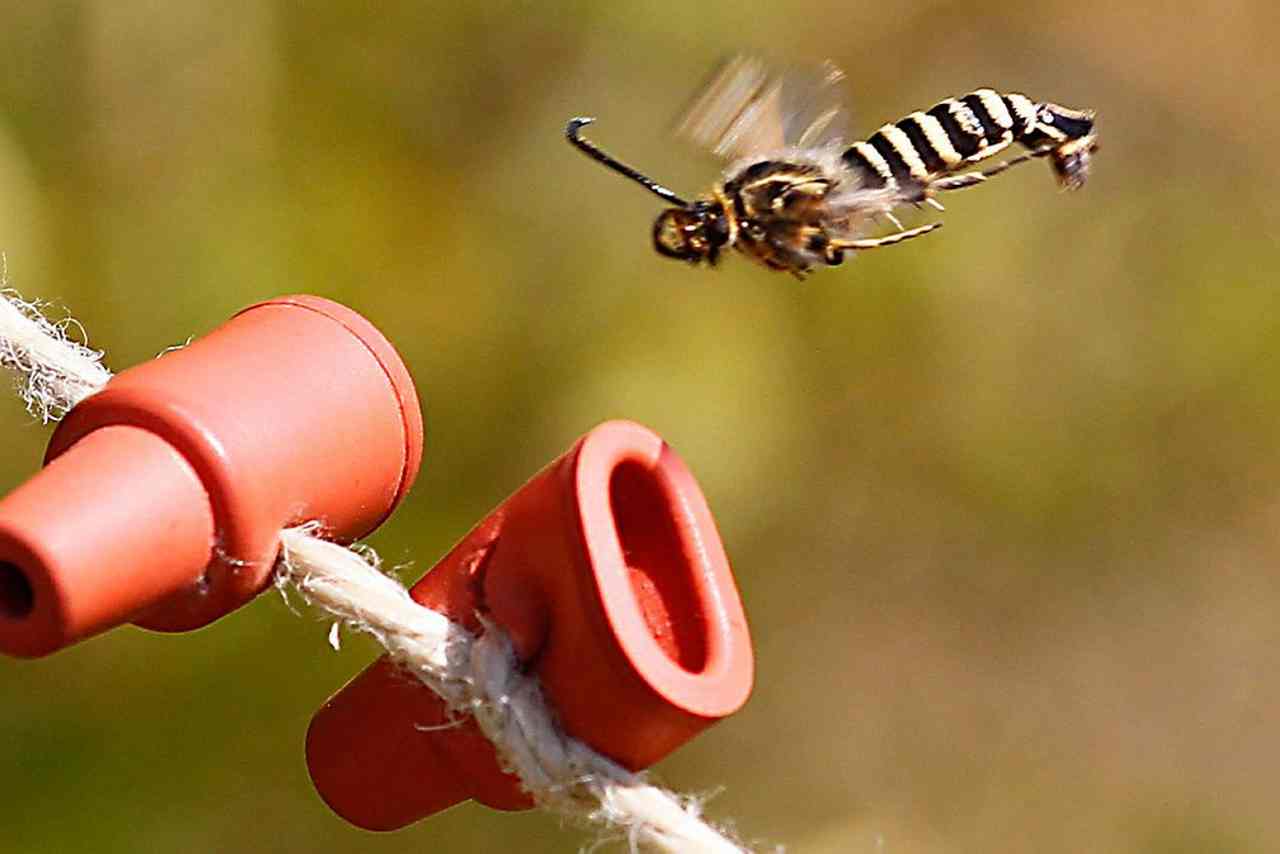Once they’re able to mate, silkworm moths emit particular chemical compounds in hopes of drawing males to their location. These chemical compounds are so highly effective – and so magnetic – that male moths will journey as much as 30 miles (48 kilometers) for an opportunity to mate, monitoring the feminine with just some treasured molecules of her scent guiding his approach. The intoxicating chemical compounds are known as pheromones.
Pheromones are particular chemical compounds produced and secreted by dwelling creatures, in small quantities, for a wide range of functions. Organisms use them to sign one thing (hazard, territory, readiness to mate and so forth) to a different member of their social group or species. Scientists have confirmed the significance of pheromones within the lifecycles of many creatures, from elephants to crustaceans, bugs to fish.
In some ways, pheromones are like hormones that act exterior of the physique. In actual fact, they bore the identify ectohormones earlier than researchers Peter Karlson and Martin Lüscher proposed a brand new phrase in 1959, deriving the time period "pheromone" from the Greek phrase pherein (to bear or transport) and hormone (to stimulate or excite). Extra merely put, it is a chemical approach for creatures to switch pleasure from one to the opposite. Given the lengths that tiny moths will journey in response to only a tiny whiff of those chemical compounds, that pleasure should be highly effective certainly.
Pheromones produce two basic classes of results: releaser results, which trigger speedy behavioral modifications, and primer results, which put together the physique for a later behavioral change. Pheromones may have an effect on organic processes comparable to maturation [sources: Bryner].
What Good Are Pheromones?
Pheromones are discovered all through the insect and vertebrate worlds, amongst crustaceans and even in crops. They play a very vital position amongst sure social bugs, comparable to ants and termites, which use a wide range of pheromones to arrange and direct the goings-on of their respective colonies. Even fungi, slime molds and algae use pheromones to draw each other for copy.
A couple of examples of pheromone makes use of embrace:
- Ants laying a path of scent pheromones to steer different colony members to a meals supply
- Wounded minnows exuding a pheromone that causes the remainder of the varsity to scatter
- Mom rabbits producing a pheromone that triggers suckling of their pups
- Bugs releasing a pheromone into the air, signaling their readiness to copulate
- Queen bees giving off a pheromone that inhibits ovarian growth in different bees, eliminating competitors
Organisms could distribute pheromones by way of a wide range of mechanisms, together with spraying them into the encompassing air or water or distributing them by way of urine. The chemical compounds linger for various intervals of time relying on their use. Hazard indicators disperse shortly, lest the recipients of the sign turn into overwhelmed by them or overly accustomed to them. Sexual indicators persist longer to permit mates to find the sender, however this additionally will increase the hazard of undesirable consideration from parasites and predators. Marking indicators, comparable to these utilized by animals to stake out territory or by egg-laying bugs to warn others to put their eggs elsewhere, last more nonetheless.
Pheromones generally is a highly effective technique of controlling habits. Entomologists use them as a lure for trapping bugs that they intend to review. Pheromones will also be employed to manage undesirable populations by disrupting mating behaviors, stopping egg-laying and generally, introducing confusion.
To check pheromones, scientists should carry out what’s known as a bioassay, utilizing an experiment that assessments whether or not a specific scent molecule induces a particular response in one other creature. Previously, these experiments had been exceedingly tough partly as a result of many organisms, like bugs, launch such minute quantities of pheromones throughout their lifecycles. Due to technological enhancements, comparable to gasoline chromatography linked to mass spectrometry, researchers can extra simply determine and ensure sure pheromones and their results [source: Wyatt].
Pheromones and Intercourse
Given the significance of pheromones within the animal kingdom, it is simple to surprise how usually human beings fall underneath pheromones’ highly effective spells. Maybe, speculate scientists, these invisible chemical compounds play a serious position in the best way we select our intercourse companions and long-term mates.
In people, although, even after a long time of analysis, scientists have but to find a real chemical in males or ladies that actually appears to activate sexual curiosity. That is maybe odd, notably when animals that share quite a lot of our DNA clearly rely closely on chemical compounds for copy. In primates, for instance, larger ranges of fatty acids in vaginal secretions, known as copulins, make some females extra fascinating to males. Up to now, research haven’t proven the identical sort convincing impact on human males [source: Burriss].
Different research have circled round androstenone, a physique odor that appears to be strongest in males. Some scientists suspect androstenone boosts temper in ladies and doubtlessly makes them extra receptive to intercourse. It is definitely true in pigs – females who scent androstenone put together for mating. Up to now, although, nobody’s been in a position to show that the identical form of impact happens in people. The identical goes for 2 internally generated steroids, androstadienone and estratetraenol, which some folks tout as highly effective human intercourse attractants – they’ve by no means been confirmed to have repeatable, demonstrable results on attractiveness [sources: Mosher, Wyatt].
A lot of human pheromone analysis has – maybe for apparent causes – fixated on intercourse pheromones. However there are many different avenues for science to discover. One examine in France, for instance, discovered that girls’s nipple secretions prompted suckling from any new child, not simply her personal [sources: Wyatt, Hadhazy].
Science’s inconclusiveness concerning "love" pheromones hasn’t stopped infinite corporations from making an attempt to capitalize on specifically formulated perfumes and colognes which might be marketed as a approach for women and men to draw romantic curiosity. A fast Web search reveals a plethora of pheromone-enhanced merchandise, generally with worth tags double that of well-reviewed scents that are not impregnated with any extra-special attraction molecules. They do not work. And to not additional sprint your hopes, however even when researchers do sometime discover a human pheromone that is particular to sexual attraction, it is impossible to have the form of potent draw that feminine moths use to entice mates [source: Greenfieldboyce].
It might be that people merely do not emit (or react to) pheromones fairly the identical approach that different creatures do. Maybe the extent of pheromones is so low that the objects of our need haven’t got senses sturdy sufficient to detect our chemical pursuits. Or maybe hundreds of years of civilization and cultural cues – from non secular disgrace to, properly, legal guidelines – have conditioned us to reply much less to our base instincts and extra to these of organized societies.
And if you wish to kill the excitement of romance as a substitute of kindle it? Take up crying as a passion. One examine demonstrated that the scent of girls’s tears did not elicit empathy in males – as a substitute, it turned them off, maybe as a result of on a primal stage they realized that intercourse was possible not within the playing cards anytime quickly [source: Everts].
The takeaway is that there are clearly some widespread chemical interactions occurring throughout the animal kingdom, inspiring an unlimited array of interactions between creatures. By finding out these extra in larger element, maybe researchers will finally start to piece collectively a pheromone puzzle that helps us make sense of our personal chemically pushed behaviors, too.







